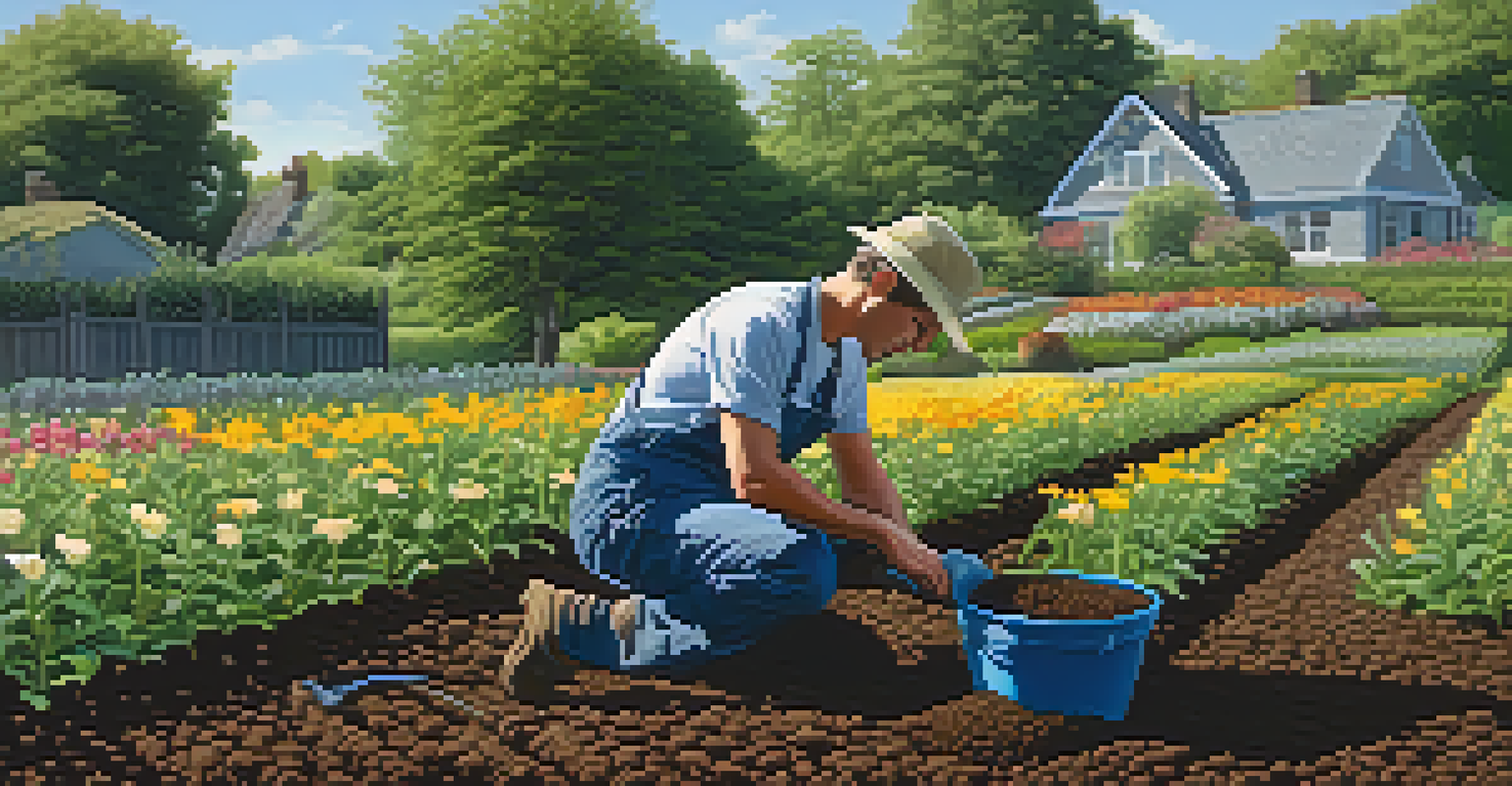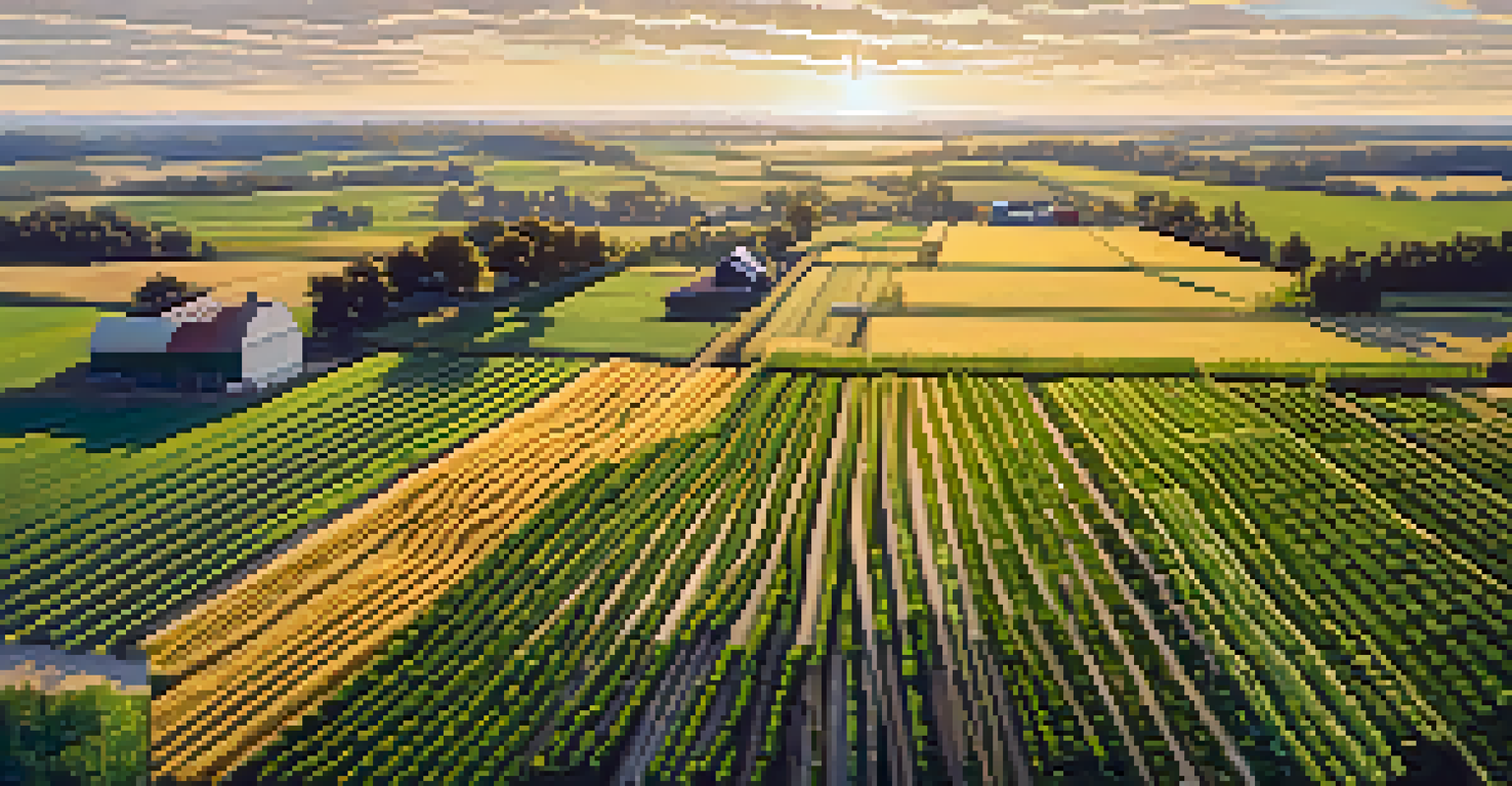Sustainable Gardening: A Guide to Planting Cover Crops

What Are Cover Crops and Why Plant Them?
Cover crops are specific plants grown primarily to improve soil health rather than for harvest. They play a crucial role in sustainable gardening by preventing erosion, suppressing weeds, and enhancing soil fertility. Think of them as a natural mulch that provides many benefits, similar to how a cozy blanket keeps you warm during winter.
The soil is the great connector of our lives, the source and destination of all. Food, fiber, beauty, creativity, community—it is the foundation of our existence.
These crops, often legumes or grasses, are planted during the off-season when main crops aren't growing. This strategy not only keeps the soil covered but also helps to fix nitrogen and add organic matter, enriching the soil for the next planting season. Imagine giving your garden a nutritious boost while it’s resting—this is exactly what cover crops do.
Incorporating cover crops into your gardening routine is a step towards sustainability, making your garden a healthier ecosystem. They can also attract beneficial insects, which can help control pests naturally. So, when you're thinking about your garden, consider planting cover crops as a way to nurture both the soil and the environment.
Benefits of Using Cover Crops in Your Garden
Cover crops offer a multitude of benefits that go beyond just enhancing soil health. For instance, they can help reduce soil compaction, allowing for better water infiltration and root growth. It’s like giving your garden a refreshing drink of water after a long dry spell—everything just flows better.

Additionally, cover crops can help manage weeds by outcompeting them for resources. When these crops thrive, they create a natural barrier that prevents weeds from taking over your garden space. This means less time spent on weeding and more time enjoying your blooming garden.
Cover Crops Boost Soil Health
Cover crops improve soil health by preventing erosion, suppressing weeds, and enhancing fertility.
Moreover, the roots of cover crops help to break up the soil and improve its structure. This not only supports the growth of your main crops but also enhances biodiversity in the soil. By using cover crops, you're not just opting for a short-term gain; you're investing in the long-term health of your garden ecosystem.
Types of Cover Crops for Sustainable Gardening
There are several types of cover crops you can choose from, each with unique benefits. Legumes, such as clover and vetch, are fantastic for fixing nitrogen in the soil. This means they can help nourish your plants for the next growing season without needing synthetic fertilizers—just like how a good meal prepares you for a busy day.
Sustainable gardening is about understanding the ecosystem and working with nature rather than against it.
Grasses, like rye and oats, can also be effective cover crops. They are particularly good at preventing erosion and improving soil structure. When they grow, they create a dense mat that protects the soil underneath, much like a sturdy roof protects your home from the elements.
Herbaceous plants, such as buckwheat, can be planted quickly and are excellent for suppressing weeds and attracting pollinators. Choosing the right mix of cover crops can create a thriving environment in your garden, ensuring that your plants get the best possible start when it's time to grow.
How to Incorporate Cover Crops into Your Gardening Routine
Integrating cover crops into your gardening routine requires some planning, but it’s well worth the effort. Start by determining the best time to plant them, usually in the fall or early spring. This timing allows them to grow and establish themselves before your main crops go in, creating a seamless transition in your garden’s ecosystem.
Next, select the appropriate cover crops based on your goals and local climate. For instance, if you're in a colder region, consider winter rye, which can withstand frost and provide cover until spring. Think of it as choosing the right outfit for the weather—your plants will thrive better if they're suited to their environment.
Types of Cover Crops Matter
Choosing the right type of cover crop, like legumes or grasses, is essential for maximizing their benefits.
Finally, once your cover crops have grown, you'll need to terminate them before planting your main crops. This can be done by mowing or tilling them into the soil, enriching it further. It’s like preparing a canvas before painting; you want to ensure it’s ready for the masterpiece you’re about to create.
Best Practices for Maintaining Cover Crops
To get the most out of your cover crops, it’s essential to maintain them properly. Regular monitoring is key; make sure they’re growing healthy and thriving. Just as you would care for a pet, checking in on your cover crops ensures they’re doing well and not being overtaken by weeds or pests.
Watering may also be necessary, particularly during dry spells. While many cover crops are drought-resistant, a little extra care can go a long way in ensuring they reach their full potential. Think of it as giving them a refreshing drink on a hot day; it helps them grow strong and healthy.
Lastly, timing is crucial when it comes to terminating your cover crops. They should be terminated at the right stage of growth to maximize their benefits for the soil. This is akin to knowing when to harvest vegetables; timing can greatly influence the overall success of your gardening efforts.
Common Mistakes to Avoid with Cover Crops
Even seasoned gardeners can make mistakes when it comes to cover crops. One common error is planting cover crops too late in the season, which can limit their growth and benefits. Just like running late for a flight can leave you scrambling, poor timing can lead to missed opportunities in your garden.
Another mistake is using the wrong type of cover crop for your specific soil and climate conditions. Each type of cover crop has its unique requirements and benefits, so it's vital to do your homework before planting. Think of it as choosing the wrong tool for a job; it can lead to frustration and poor results.
Timing is Key for Success
Proper timing for planting and terminating cover crops ensures they provide maximum benefits to your garden.
Lastly, neglecting to incorporate the cover crops into the soil properly can hinder their benefits. If they’re not adequately mixed in, you might miss out on the nutrient boost they provide. It’s similar to not fully blending ingredients in a recipe; the end result may not be as delightful as it could have been.
The Future of Sustainable Gardening with Cover Crops
As awareness of environmental issues grows, sustainable gardening practices, including the use of cover crops, are becoming increasingly popular. These practices not only contribute to healthier gardens but also promote biodiversity and combat climate change. It’s like planting a seed of hope for future generations—every small effort counts.
The integration of technology in gardening, such as soil health monitoring, is also enhancing how we approach cover crops. With smart gardening tools, you can track the health of your soil and make informed decisions about which cover crops to plant. It’s akin to having a personal coach guiding you on your gardening journey.

Ultimately, cover crops are a vital part of a sustainable gardening future. By adopting these practices, gardeners can create flourishing ecosystems that benefit both their plants and the environment. So, whether you're a novice or a seasoned gardener, embracing cover crops is a step toward a greener, healthier planet.